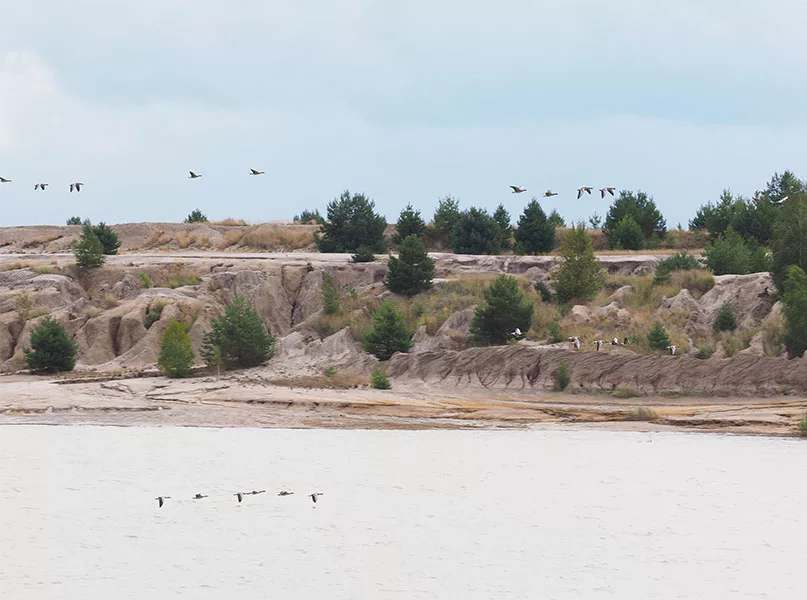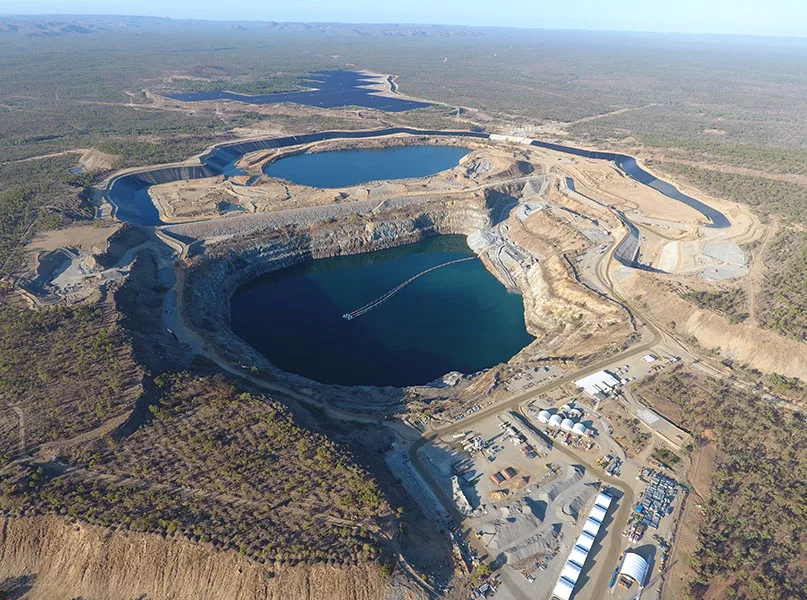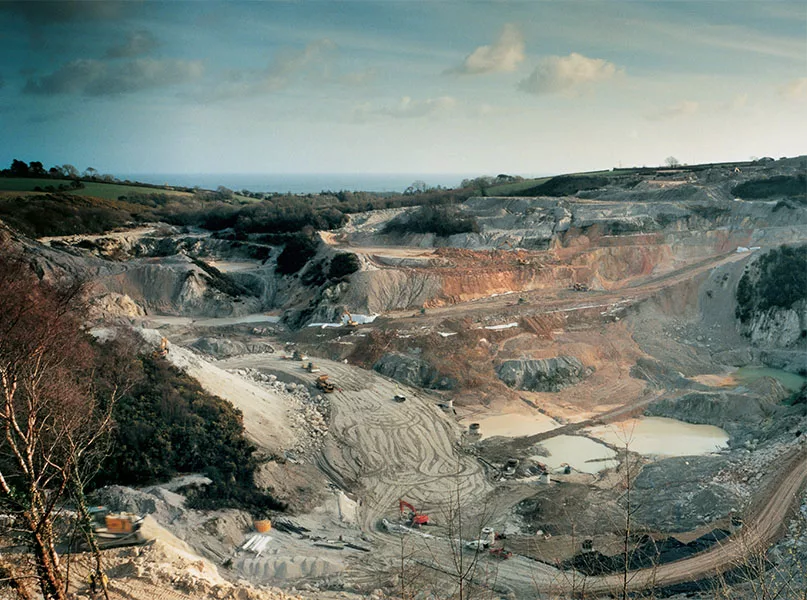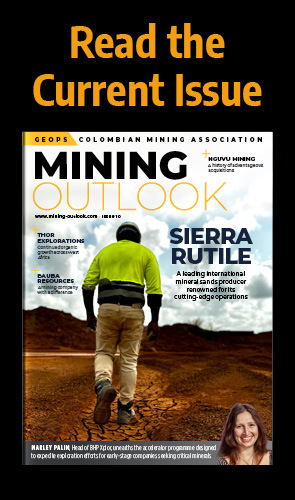Dr Peter Whitbread-Abrutat, Founder of Future Terrains, believes that when a mine closes, it shouldn’t become a scar on the landscape or a source of pollution. Instead, with imagination and determination, ex-mine sites can offer hope for future generations.
REVOLUTIONARY REPURPOSING
Mines have finite lives, but their legacies, good or bad, can persist for many years.
The reputation of a mining company can be forged or damaged by how well they close their mines. In some jurisdictions, even where a mine is closed in compliance with regulatory requirements, the resulting landscape is of little benefit to the lives of local people or surrounding ecologies.
Then, there is the vexing issue of what to do with the legacy of abandoned mines, which often impact landscapes and communities.
We already know how to do things better; there are a wealth of ingenious ways that old mine sites have been reinvented to rebuild ecological integrity and enhance the lives of the people connected with them.
One celebrated example is the Eden Project in Cornwall, UK. Created in a repurposed 180-year-old china clay quarry, it has become a successful environmental and educational attraction.
This engine for socioeconomic renewal has generated £2 billion of value for the local economy since it opened in 2001. Critically, the people involved in its development came from outside the mining sector.
PARADIGM SHIFT
As investors and society increasingly push the mining sector towards environmental and social responsibility, including during a mine’s closure, the language associated with this process is evolving.
Phrases such as social transition or just transition, or nature-positive and nature-based solutions, describe progressive approaches far from traditional closure and more towards transition. Often, this involves recouping costs at the end of a mine’s life.
During transition, a mine doesn’t technically close, but catalyses the availability of new assets and resources such as mine water, buildings and infrastructure available for repurposing, new mineral resources from old waste, cheap energy, and repaired land to stimulate new socioeconomic, environmental, and cultural growth after mineral extraction has ended.
In some parts of the mining world, there has been a paradigm shift in action. As society’s interest in a greener future grows, so too do the opportunities to reuse mine infrastructure, such as for the generation and storage of renewable energy.
Open pits of the closed Kidston Gold Mine in Queensland, Australia, for instance, are being re-engineered into a major pumped storage hydro project.
Meanwhile, old mine buildings at the closed Lisheen Mine in County Tipperary, Ireland are being re-purposed into an innovative hub that utilises renewable wind energy to stimulate a new bioeconomy.
Moreover, the structures of the Zollverein Coal Industrial Complex in Germany’s Ruhr district have been listed as a UNESCO World Heritage Site and converted into a centre for cultural reflection, including the Ruhr Museum, a swimming pool, and events space. The site is also used for ice-skating during the winter months.
Just outside Newcastle in Northeast England, a coal mine overburden site has been transformed into stunning land art of a lady in repose, known as Northumberlandia or the Lady of the North.
More from Mining Outlook
Now a public open space and nature park with educational and recreational facilities, this site perfectly reflects how a mine site can be transformed into something environmentally regenerative.
“A mine’s closure should not be the end of the story, but herald a vibrant new chapter”
Dr Peter Whitbread-Abrutat, Founder, Future Terrains

ALTERNATIVE USES OF MINES
Acid waters emanating from operational, closed, or abandoned mines can present issues for the global mining industry.
Yet, some see creative value in this contamination. For example, Professors of Art and Engineering at Ohio University in the US have developed high-quality paint pigments from the acid that seeps from abandoned coal mines.
Moreover, mining landscapes and underground locations are more frequently being utilised for producing and storing food.
The Fontina Cheese Cooperative in the Italian Alps, for instance, matures thousands of truckles of cheese in the galleries of an abandoned copper mine.
At the same time, in Ghana, an agroforestry system has been developed atop a gold tailings storage facility (TSF), benefitting the local agricultural landscape.
In some cases, a hands-off approach may be most appropriate to enable a gradual, natural, and ecological recovery. For example, Germany’s Sielmann Natural Landscape in Brandenburg, which is situated on thousands of hectares of a former surface lignite mine, contains natural landscapes and hiking areas with little human intervention.
ANTICIPATING THE AFTERMATH
How communities and other stakeholders participate in dialogues surrounding what happens to their societies and lands is fundamental, although this work can often prove difficult or time-consuming.
For example, immersive community workshopping in defunct German lignite pits , transparency and trust-building at the Beenup Mine in Western Australia (WA), trialling new underground technology at Canada’s Northern Centre for Advanced Technology (NORCAT ), or new careers in mine restoration for the Banjima people in WA are all instances of community development.
This brief insight into the creative and imaginative uses of old mine sites celebrates ingenuity in the mining sector.
As such, wherever mining takes place, solutions for its aftermath must be put forward when the mine is conceived instead of being left to chance.

A VIBRANT NEW CHAPTER
When it comes to the repurposing of mines, challenges can arise, primarily concerning perspective, willingness, and communication.
These obstacles can be overcome by considering a mine site not as a problem to fix, but as an opportunity to nurture, whilst learning from existing successes to avoid reinventing the wheel.
A successful response to the concept of an inactive mine is one that challenges convention. At the same time, collaboration, knowledge, and choices should be seen as currency with which progress can be acquired.
Common attributes signpost the path to advancement, including science-based problem-solving, constructive legislation, available funding, leadership, and a critical mass of the right people thinking positively in the same place at the same time, looking in one direction, and speaking the same language.
A group of people with a good idea and the wherewithal to realise an opportunity can drive astonishing progress.
There is a valuable lesson here – innovation is encouraged by inclusivity and collaboration. Solutions can often be found by looking beyond the conventional cast of engineers and environmental managers when it comes to devising ideas to repurpose an old mine.
Finally, any landscape tells a unique story of interaction between countless generations and their lands. The mining landscape we experience today is just one chapter in a lengthy narrative, whilst the opening of a new mine can foretell another instalment in the tale.
As such, a mine’s closure should not be the end of the story, but herald a vibrant new chapter.
































